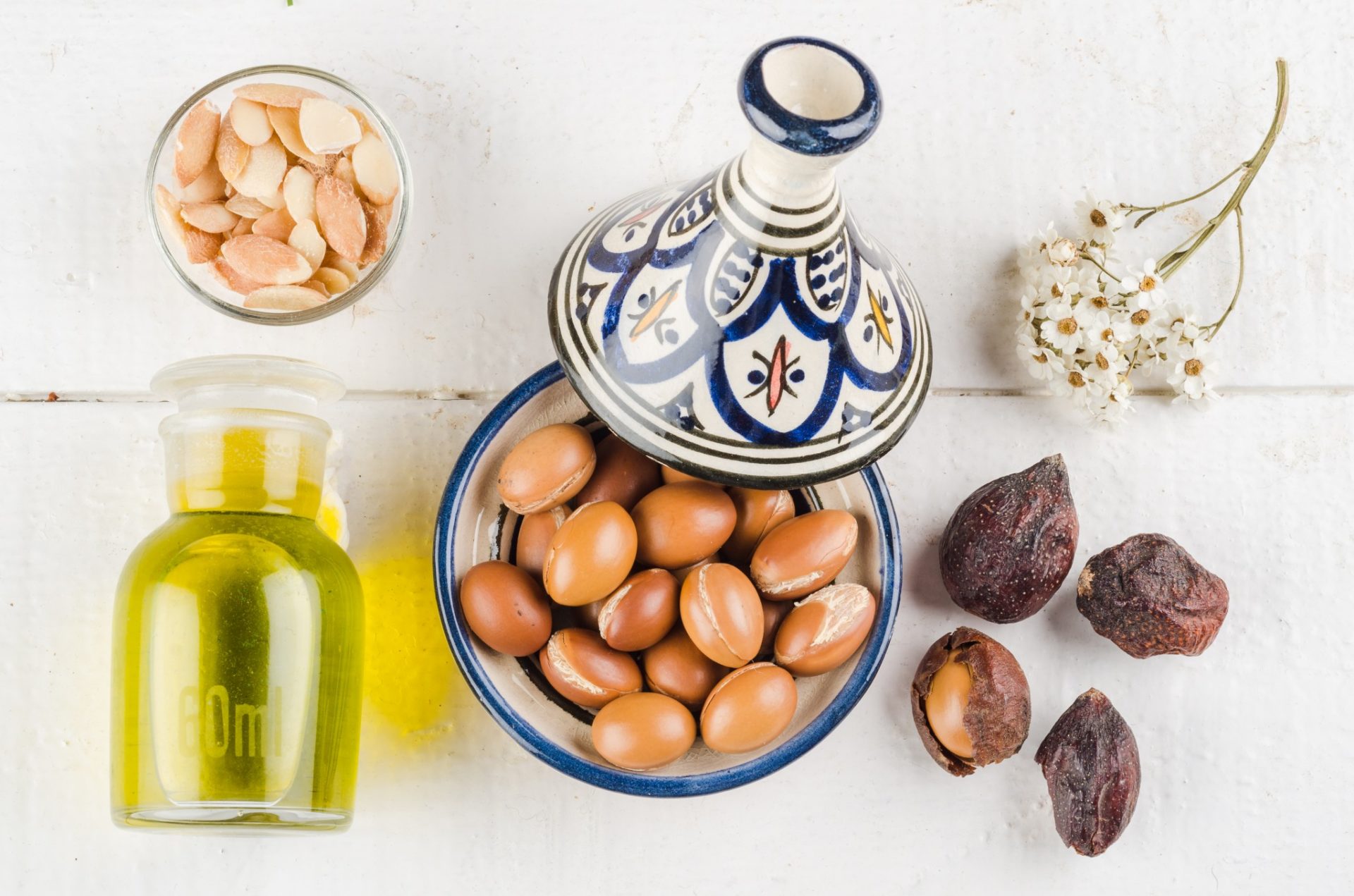
Coming across a herd of goats perched on a tree on your way to work can seem surreal, but not in Morocco. Actually, goats on trees in Morocco is commonplace.
Dotting the semi-desert region in Southern Morocco is the Argan tree, which for centuries has been the source of life for the country’s Berber population.
Goats brave their way up the tree’s gnarled and thorny branches to forage for its olive-like fruit, the very crop that nowadays dominates much of Morocco’s rural economy.
Argan oil is the latest fad in the cosmetic world, but Moroccan women have been applying it to their skin and hair long before it appeared on our supermarket shelves.
This honey-colored oil with a nutty flavor is yielded from kernels found inside the Argan fruit.
Traditionally, it was always produced by the delicate touches of the Berber farmers, however, the world-wide demand for the product has forced the manual methods to give way to contemporary mechanical extraction tools. Its popularity also poses a threat to the already endangered tree.
In light of this growing hype about these products, women-run Argan co-operatives in Morocco have been employing sustainable measures to protect the Argan tree and the thousands of women who work in the industry.
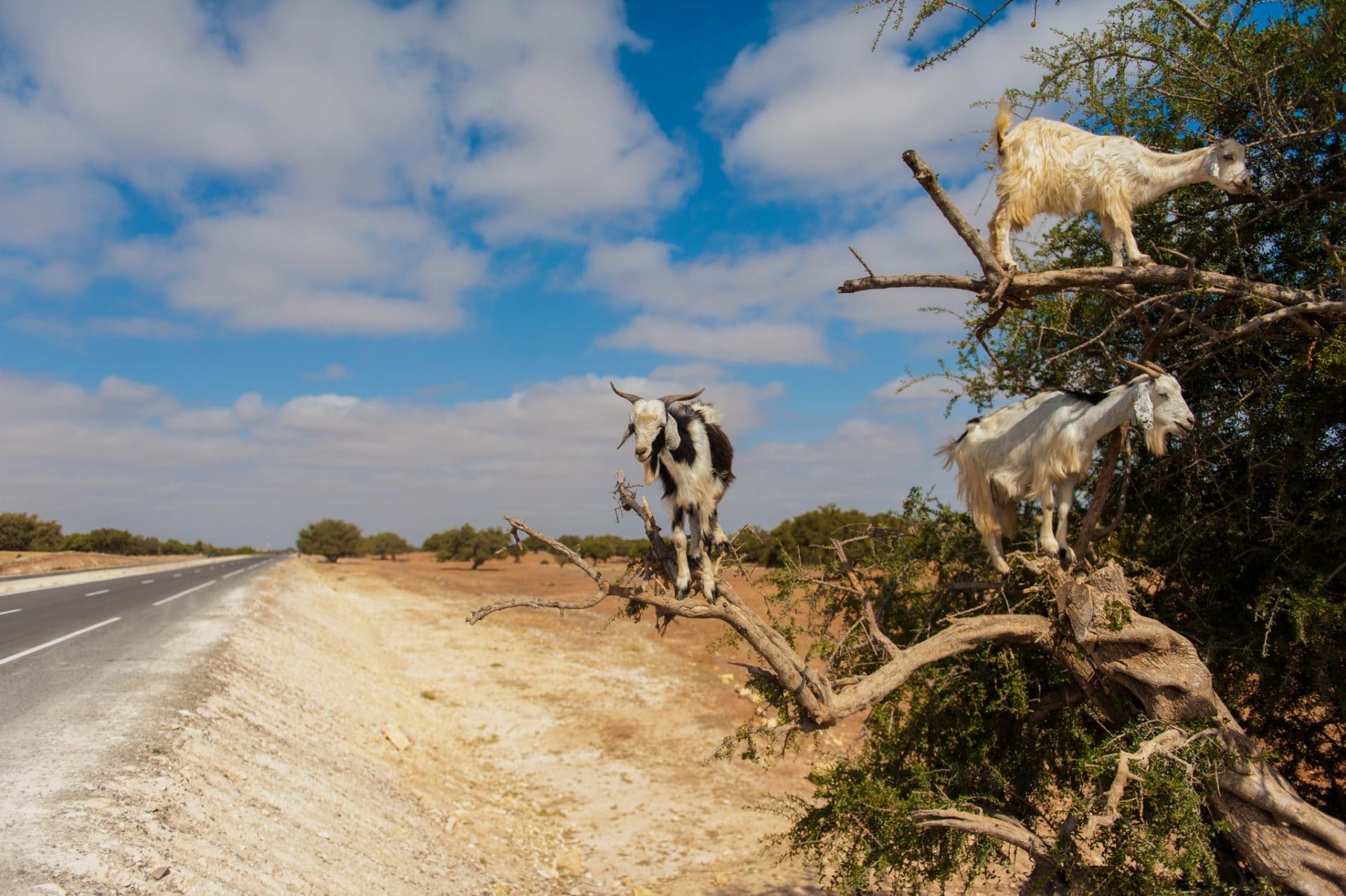
Buying The Real Argan
The array of Argan products we see around us contain small – if any – traces of Argan oil.
The current cosmetic propaganda surrounding the oil is the biggest challenge faced by traditional producers. Rich in essential fatty acids and vitamins A and E, Argan oil makes a great moisturizer for skin conditions, and it is commonly marketed as an anti-aging product; however, cosmetic products that dilute the oil with chemical ingredients do little to support Morocco’s Argan co-operatives.
Organic and fair-trade Argan products are best bought from certified co-ops, preferably on-site.
Many co-operatives across Morocco still use traditional extraction and manual grinding to produce the highest quality of oil. A liter of hand-pressed oil requires at least 30 kilograms (66 pounds) of kernels, and takes around 10 hours to produce. This time-consuming process calls for long hours of manual labor.
So how does buying organic Argan oil actually help these all-female co-operatives?
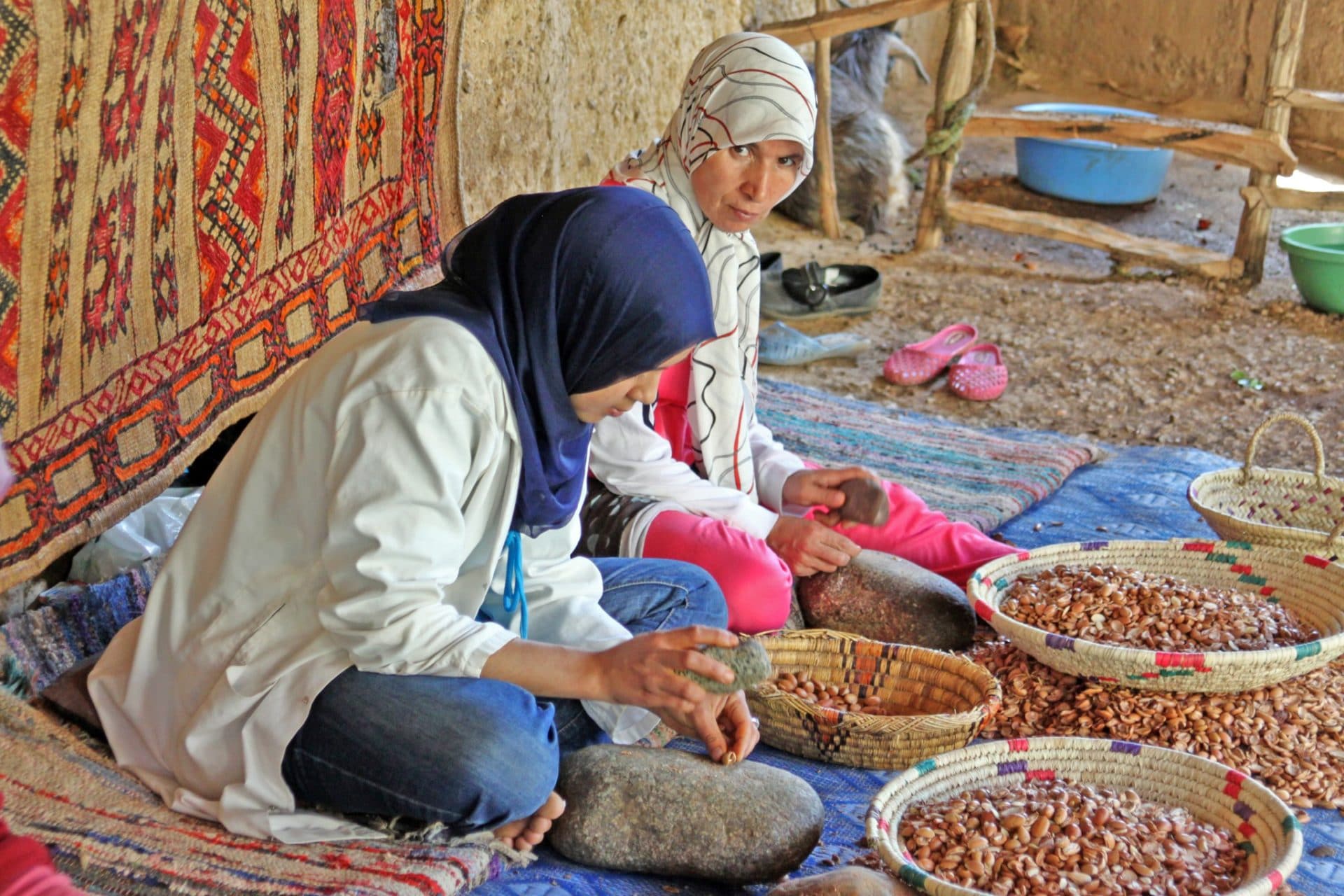
Helping Women Gain Economic Freedoms
Based on the practice of fair trade, the main goal of all-female Argan co-ops is the financial empowerment of women from marginalized backgrounds. The first women-led Argan co-op was established in 1998 by Dr. Zoubida Charrouf, whose research on the Argan tree has played a vital role in the sustainable and socioeconomic practice of Argan oil production. These co-operatives across Morocco now employ around 3 million people, the majority of employees being women from Berber villages. In 2011, Tighanimine Cooperative, a project led by Dr. Charrouf, became the first Fairtrade certified Argan oil producer in the world.
Illiteracy is still rife among rural women in Morocco.
In a bid to improve both the economic and educational status of Berber women, a percentage of the profits made by these co-operatives is invested in the rural community.
Women working in Argan co-operatives are offered free afternoon classes in rudimentary education, including literacy skills and hygienic practices.
In a male-dominated society, a steady income has been allowing rural women a new source of freedom to become self-sufficient. Bypassing intermediaries and buying Argan products direct from production helps support these women with their newfound stature.
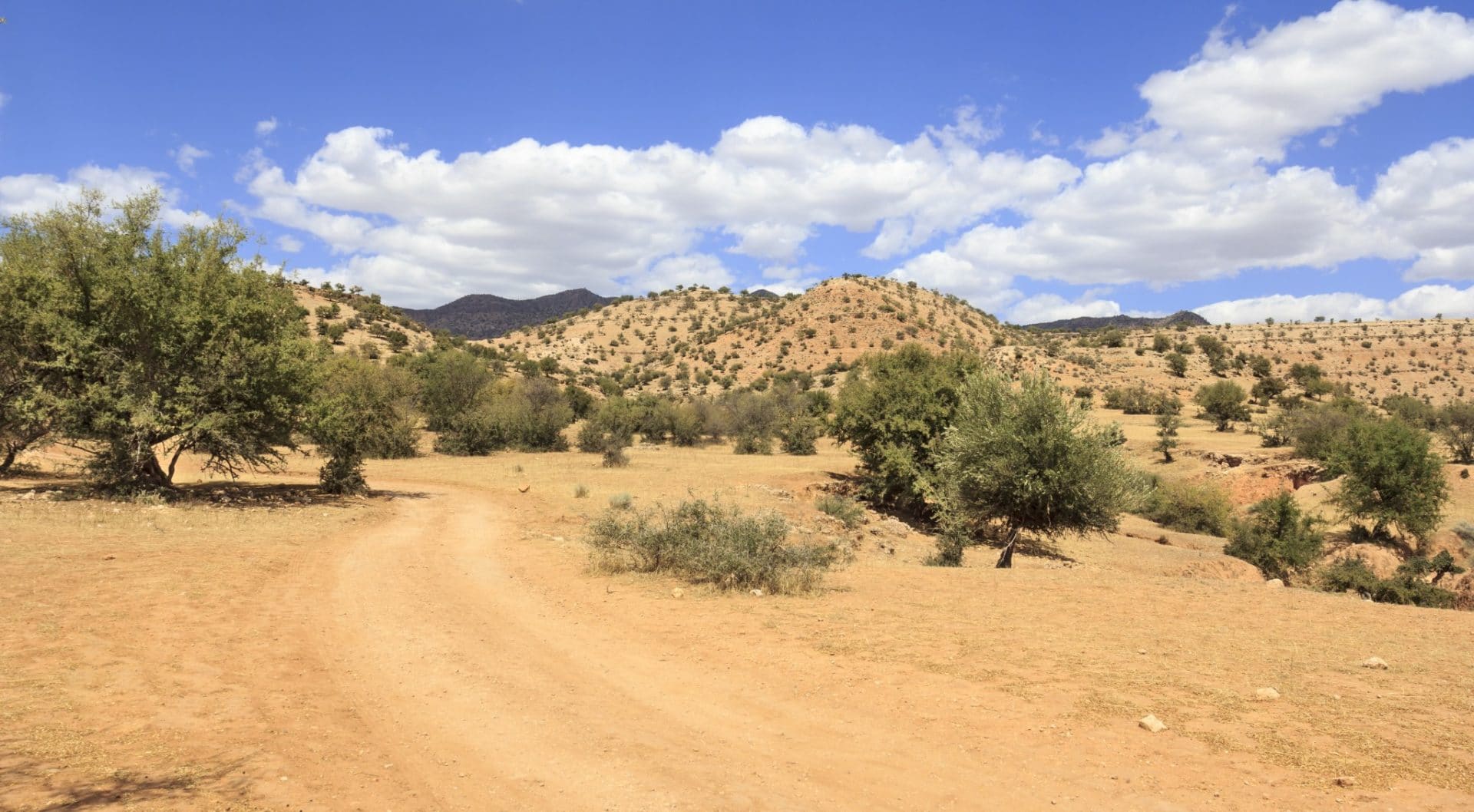
Protecting The Argan Forest
In 1998, UNESCO declared the Argan forests in Souss a biosphere reserve. Meanwhile, Argan co-operatives keep practicing sustainable and responsible harvesting to preserve these woodlands.
Reforestation projects implemented by most co-operatives encourage each employee to plant at least 10 Argan trees a year.
The regression of these forests would have major environmental impacts on pastoral communities. Situated at the edge of the Sahara, Argan forests offer protection from desertification, while the trees provide shade and food for domestic animals, and its deep, sturdy roots help prevent soil erosion.
The livelihood of women working in Argan co-ops hinges on the availability of the Argan tree and the consistent demand for its oil.
While governmental programs are in place to ensure the socio-economic and environmental development of Argan forests, many co-operatives are re-investing a percentage of their annual profit in Argan nurseries.
The Gift That Keeps On Giving
Argan oil is helping thousands of women enjoy newfound economic freedoms, while farmers continue relying on the Argan tree for multiple agricultural purposes.
In fact, it is estimated that the Argan region supports 90% of Morocco’s rural population. Perhaps the Berbers are right when they say that the tree is “a gift from God.”
Have you visited an Argan co-operative in Morocco?
Latest posts by Daniela Frendo (see all)
- 10 Best Zero Waste Makeup Brands + Product Recommendations For Travelers - Nov 30, 2020
- 5 Not-To-Miss Scenic Scotland Hiking Trails - Nov 5, 2019
- Responsible Morocco: Supporting The Women Who Give Us Argan Oil - Jan 9, 2019
- Greenwashing: What It Is & How To Avoid It - Dec 9, 2018
- Exploring Mezcal & Mushrooms In The Land Of The Zapotec - Aug 21, 2017

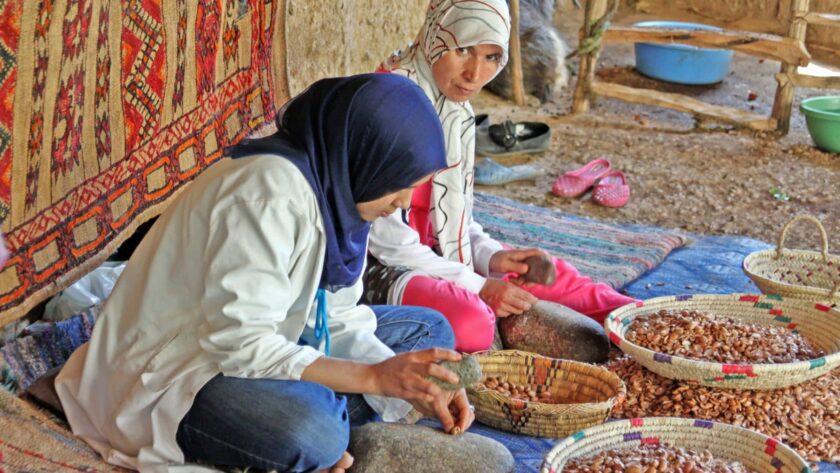




Hi! I came across your article this evening. Yesterday I visited a very rural women’s cooperative outside Tiznit that is looking for help to get their argan oil and related products to market. They’ve had some training in marketing and have developed a pretty label for their argan oil. They were so hard working, kind and gracious and their product is amazing. I loved the oil and wanted to support the co-op so I purchased 2 liters at $75 a piece. I’ll rebottle and give most away as gifts but I’m still going to have a lot of it left over! What to do with it…it doesn’t last forever. They said it’ll be good for at least 6 months. Anyway, being there, seeing the process, and speaking with the women (through an interpreter) was a wonderful experience.
@Patricia: What an amazing experience. That would definitely be a great souvenir gift for friends and family, especially as it truly tells a story not to mention is something actually useable to them. Glad you got to check this out!
Hello Patricia. I know this is an old post but I would to get some more information on the cooperative you visited. Please could you confirm the name. Thanks
Thank you very much for the information, I needed to get more information on this subject. Regards
Congratulations for your great work, I really liked your article.